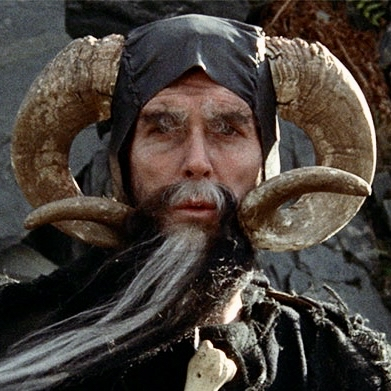As the sheer quantity of clothing available to the average American has grown over the past few decades, everything feels at least a little bit flimsier than it used to.
The most obvious indication of these changes is printed on a garment’s fiber-content tag. Knits used to be made entirely from natural fibers. These fibers usually came from shearing sheep, goats, alpacas, and other animals. Sometimes, plant-derived fibers such as cotton or linen were blended in. Now, according to Imran Islam, a textile-science professor and knit expert at the Fashion Institute of Technology in New York, the overwhelming majority of yarn used in mass-market knitwear is blended with some type of plastic.
Knits made with synthetic fiber are cheaper to produce. They can be spun up in astronomical quantities to meet the sudden whims of clothing manufacturers—there’s no waiting for whole flocks of sheep to get fluffy enough to hand shear. They also usually can be tossed in your washing machine with everything else. But by virtually every measure, synthetic fabrics are far inferior. They pill quickly, sometimes look fake, shed microplastics, and don’t perform as well as wool when worn. Sweaters are functional garments, not just fashionable ones. Wool keeps its wearer warm without steaming them like a baked potato wrapped in foil. Its fibers are hygroscopic and hydrophobic, which means they draw moisture to their center and leave the surface dry. A wool sweater can absorb a lot of water from the air around it before it feels wet or cold to the touch
A significant amount of polyamide or acrylic is now common in sweaters with four-digit price tags. A $3,200 Gucci “wool cardigan,” for example, is actually half polyamide when you read the fine print. Cheaper materials have crept into the fashion industry’s output gradually, as more and more customers have become inured to them. In the beginning, these changes were motivated primarily by the price pressures of fast fashion, Islam said: As low-end brands have created global networks that pump out extremely cheap, disposable clothing, more premium brands have attempted to keep up with the frenetic pace while still maximizing profits, which means cutting costs and cutting corners. Islam estimates that a pound of sheep’s wool as a raw material might cost from $1.50 to $2. A pound of cashmere might cost anywhere from $10 to $15. A pound of acrylic, meanwhile, can be had for less than $1.
This race to the bottom had been going on for years, but it accelerated considerably in 2005, Sofi Thanhauser, the author of Worn: A People’s History of Clothing, told me. That year was the end of the Multifiber Arrangement, a trade agreement that had for three decades capped imports of textile products and yarn into the United States, Canada, and the European Union from developing countries. Once Western retailers no longer had meaningful restrictions on where they could source their garments from, many of them went shopping for the cheapest inventory possible.
The same thing is happening to every commodity and service – “enshittification” isn’t just an internet thing.
It all boils down to psychopathic greedy executives and boards squeezing every last cent from consumers (and workers) to make themselves richer. Prices and therefore corporate profits keep going up, pay keeps going down (because it’s not inflation-adjusted) and the quality of everything is going down the shitter, just to benefit the 1%
It’s not the “fault” of amoral individuals, no. This is simply the system working as intended. A system where capital translates to political power will inevitably lead to capital accumulation. Corporations are only for generating more capital and more profits to their owners. Profits they can turn into more capital elsewhere.
It’s silly to expect a “good” version of this where the people at the top… don’t put their interests first? Like why would they ever do that? If someone at the top doesn’t fight for profit like a shark, they will lose their spot and risk becoming a worker, or dooming their family and future generations to become workers.
These people are just doing what’s best for them. And everybody around says “hey! that’s bad, you should put aside your self interest for our self interest!”.
Bro the problem is THE SYSTEM. As long as we have this system, we will always have the same people in power, the same problems, and the planet will die in 50 years. You can fight reality all you want, but that’s where we’re at.
Obviously, therefore, competing against the system of moneyarchy would be the only possible means of displacing its dominion on the world, so, …
… how come nobody’s doing it properly, or at-scale??
I’m talking about a competing economic-system, not competing against a few companies within moneyarchy’s regime.
: )
It’s not “moneyarchy”, it’s capitalism. And I mean, the system that properly competes against it, and was/is done at scale, is socialism.
Socialism or barbarism is becoming more and more true, and more like a cry for immediate choice instead of a future hypothetical.
Its not like they were dropped into the system and just made the best of their situation. The capital class created this system.
Its not like they’re trying to change it for the better, they’re willfully encouraging the enshittification of the systems they created.
Some thoughts.
I understand that clothes that are ethical and of quality cost a lot more, but up to a point. Certain brands raise prices because they can hang a ‘green’ label on it. For instance, as a vegan i bought plastic shoes (not happy with that, obviously) and they were pretty cheap. Then, companies discovered they could call those shoes ‘vegan’ and the price went up, up, up, for those same cheapo shoes.
One of the reasons i learned to sew is that i hope to have slightly more control over the fabrics i choose.
I have a cotton sweater in my closet that is about 30 years old. It still feels very thick and it looks fine. The thing goes in the dryer and everything. Nowadays, cotton is so flimsy, it’s ridiculous. I’ve had clothes that i put in the washer before wearing them for the first time and they came out shredded.
But even cotton - or so i read - is not that environmentally friendly, because it uses a ridiculous amount of water, not to mention that some dyes are probably also terrible. Even wool sometimes undergoes harsh treatments that are not environmentally friendly at all.
I feel like the amount of effort we have to make to choose our clothing is ridiculous and tiring. Yet, with our actions we need to give a signal that we want changes (as a side note, just like i buy pants in the men’s department, because pockets). Actions through what we wear, but also political choices, because so many parties encourage greed in the name of ‘the economy’.
I wish it was easier to find quality clothes. Nearly every piece of clothing I find has synthetics mixed in.
I would gladly pay a lot more for good, ethical, quality clothes.
I’ve been quite happy with https://www.american-giant.com/collections/cotton.
Quality “first world” labor and cotton. No slave labor, no bull shit. That’s the brand.
Well, the problem not only lies in synthetics though. Cotton is certainly great and all, but it is hard to get fair trade and actually organic cotton. And wool is hardly ethical as you always have to keep animals and sheer them. Leather? Obviously not ethical. Maybe linen and other natural fibers, but they usually have very specific applications in clothes. But yes, I agree, I would definitely gladly pay for good, ethical, quality clothes, too!
I’ve become of 2 minds about leather footwear & gloves:
The primary alternative to leather is plastic, which, when it breaks-down, sabotages the food-web, right?
Leather doesn’t do that.
I honestly don’t know what The Right Answer™ is, on that one, anymore.
I’m usually vegan, btw, not for ideological/religious reasons, but simply because doing otherwise blocks my ability to reach the meditations I need.
I do find butchering animal lives for a mere few-meals unethical, but refugee Buddhist monk Kelsang Gyatso pointed-out in one of his books, IF a person has anemia, THEN the right antidote is eating red meat.
He’s ordained, a Geshe, and he is recommending that right in his dharma.
Years-enduring clothing is a much less desolating consumption than needless meat-eating.
Exactly as that brilliant psychological truth in the Christian bible shows, naive truth, aka symbolic “truth”, is syrupy-sweet in one’s face/mouth, whereas digested & real, experience-induced-understanding Truth, is bitter.
See for yourself:
https://www.biblegateway.com/passage/?search=Revelation 10%3A8-10&version=CJB
Leather is basically cellulose from animal skins
There are many other sources of cellulose from [mushrooms](Are Mushrooms the Future of Alternative Leather? https://www.nytimes.com/2022/12/14/business/leather-fake-mycelium-mushrooms-fashion.html) to cacti to even pineapple
These are still fairly young materials and aren’t super common. You’re starting to see them more often but usually in smaller runs of more expensive brands. I personally haven’t bought any of these alternative leathers but next time I need to buy shoes I’m going to look into them again
Looking forward to more better options coming. In the meantime, personally I think I’d rather buy a durable leather thing than a disposable plastic thing. Idk just been my line of thinking lately. Am not vegan or anything tho.
Leather is more ethical than plastic alternatives because leather is generally a byproduct. Cows generally aren’t raised just for their skins. The skins just happen to be product of meat processing. And if we wish to fully respect the life of the animal that we’ve raised for meat, then it’s important to use every part possible.
And like you mentioned, leather is significantly more durable, hardy, and longer lasting than plastic alternatives. So instead of having to buy a new fake-leather coat every couple years, you can keep the same one for decades.
Eh. I get you but. I don’t remember the details but I think the leather is a byproduct line of thinking doesn’t necessarily end up being true in the industrialized system unfortunately. Sorry haha. But yeah in general I’m all for things lasting longer and using all the parts of the thing 😊
It’s just crappy that good, ethical, quality clothes do cost a lot more. I absolutely understand why, but man does it suck for the average consumer nowadays.
I’ve been slowly upgrading and updating my wardrobe over the last couple of years, and I’ve bought a lot second hand and then been trying to put my money towards the most sustainable/ethical choices that I can when I buy new stuff. (And I realize that being able to do that is a luxury, too.)
Knitting my own garments (sweaters, scarfs, etc) has made me appreciate how long it really takes to make actually good clothing that’s meant to last. Thankfully more and more people are getting on board with the idea of “slow fashion”, with a significant amount of younger people especially during the pandemic picking up knitting and crochet as well as seeing more of the value it possesses than before.
I’ve been making my own clothes for more than a decade now and I’ve dabbled in knitting and crocheting, but I’ll admit it’s a bit too much for me. I once made a dress where I didn’t have quite enough fabric so the skirt ended up too short and thought, oh, I’ll just a crotchet a nice 15 cm wide decorative border. Problem was it was a circle skirt so the hem was 4m long. Shit took me 15 damn hours lol. I respect people who have the patience for it or just find it fun but that’s not me.
I’ve been knitting for a decade but only made my first pair of socks during the pandemic. I bought some wool from a reputable seller in fun colors. It was so fun and they were so comfy, I made several more.
I almost never wear anything other than my knitted socks these days. They’re just so daggone comfy and they keep my feet warm yet they never feel sweaty, except on extremely hot days when I’m outdoors.
Wool socks are absolutely luxurious to me now. 10/10 recommend knitting socks if you haven’t already!
And “run” the heels and ball of the foot so they felt down and last longer: https://www.youtube.com/watch?v=4fKKLOUNOHU
Everything is crap now.
Used to be you’d have cheap stuff and good stuff. Now it’s just cheap stuff, and cheap stuff with more markup.
The Discworld Vimes Boots theory doesn’t even work any more. We all get shafted, but some people have enough money to not care.
I got a merino wool sweater for $10 at the thrift shop and I felt like a god.
I think a lot of people have noticed clothing quality going down for a while, especially if shopping fast fashion brands; but I thought it was especially interesting how the decline in quality permeated through the high end brands as well.
When I saw the Ben Schwartz photo referenced in the article, I had assumed it looked worse since it was probably not as nice a brand as Billy Crystal’s sweater. I was surprised to see it was likely a 400USD sweater that looked like that.
As the article notes at the end, it is still possible to find fully natural clothes, but I wish they were easier to locate.
I’m tired of disposable clothing.
I have no money. I will wear a plastic bag if it is cheaper.
Quality clothes (not to be confused with expensive brands which is something completely different and probably not quality) is usually much cheaper in the long term while providing more value.
Especially stuff like footwear can be “buy it for life” as long as you can find a quality product and take some care of it.
Unfortunately most people are also lazy and don’t really want the “hassle” of taking care of their stuff because it’s easier to just throw stuff away and buy new things.











